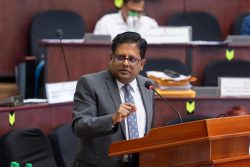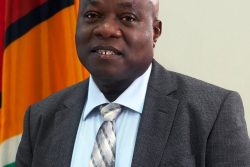Dear Editor,
A shortage occurs when demand exceeds supply for a good or service. The short-term solution is either physical rationing of the limited supply, or economic rationing through the price signal. The long term solution is to increase supply which is never easy with large processes due to indivisibilities – the inability to alter supply to exactly meet demand – resulting in alternating shortages and surpluses. Private companies invariably use the economic solution to deal with shortages. For example, Caribbean Airlines uses its dominant powers to limit supply and maintain a perpetual shortage position. It then increases its incremental price for seats on its flights until all seats are taken. A visit to its website will show many future flights from Guyana sold out (a shortage) and other flights with seats available have those seats priced incrementally higher. This allows Caribbean Airlines to optimize its income under a shortage position. Public entities tend to deal with shortages through physical rationing.
Transport & Harbours Department (T&HD) falls into the latter category. Its ferry service across the Essequibo River cannot meet the vehicular traffic needs of the population so it rations service on a first-come basis and those remaining are rejected. The problem is the inconvenience and travel costs incurred by those rejected. A personal example was on Saturday last when I travelled from Georgetown to Parika to take the 4 AM ferry. Arriving there at 3:15 AM, I joined a line of approximately 15 vehicles waiting in the dark outside the gate. At 4:15 AM the boat left the dock on its voyage without any movement in the line. It was later learnt that vehicles that boarded were parked on the wharf and so there was no movement from the line outside the gate. These vehicles were then forced to return to where they originated or await the next ferry, approximately 12 hours later.
Although the rationing need is understood, poor communications is leading to unnecessary inconvenience and costs to the Guyanese public. As T&HD’s Parika operation is low-tech – the billing clerk was operating with an oil-lit lamp during the power outage on Saturday morning – a low-tech communications solution might be appropriate.
A possible solution would be to create a hotline with schedules and daily status reports. One important bit of information is the number of vehicles registered for a given boat trip. This comprises vehicles left back from the last trip and those arriving early. Such a communication should be updated at least half-hourly. If this hotline was in effect, it would have saved me and the others in the line outside the gate an unnecessary trip on Saturday. In addition or as an alternative, since cell-phone use is widespread in Guyana, status text messages could be sent to a distribution list of registered travellers providing regular updates.
This unacceptable situation existing with the ferry crossing of the Essequibo should not be allowed to persist as it will continue to extract significant costs and inconvenience to the travelling public. Until a channel is dredged allowing for more frequent ferry service, and thus eliminating the shortage, T&HD needs to implement improved communications programmes to lessen the impact on its customers.
Yours faithfully,
Louis Holder









